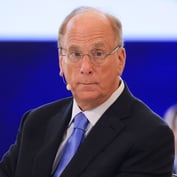Three Federal Reserve officials on Monday said policymakers will need to raise interest rates further this year to bring inflation back to the central bank’s goal.
“We’ve made a lot of progress in monetary policy, the work that we need to do, over the last year,” Federal Reserve Vice Chair for Supervision Michael Barr told a Bipartisan Policy Center meeting on Monday. “I would say we’re close, but we still have a bit of work to do.”
The Fed held interest rates steady in June after raising them for 10 straight meetings to a range of 5% to 5.25%. Most policymakers expect to increase rates by a further half percentage point by the end of the year, according to projections released after their June gathering.
“We’re likely to need a couple more rate hikes over the course of this year to really bring inflation back into a path that’s along a sustainable 2% path,” San Francisco Fed President Mary Daly said at the Brookings Institution in Washington.
Cleveland Fed chief Loretta Mester, speaking at an event hosted by the University of California, San Diego, said her own view also “accords with” Fed officials’ median forecast for two more rate increases.
“In order to ensure that inflation is on a sustainable and timely path back to 2%, my view is that the funds rate will need to move up somewhat further from its current level and then hold there for a while as we accumulate more information on how the economy is evolving,” she said.
Balancing Risks
The FOMC next meets July 25-26 and is widely expected to resume rate increases at that meeting.
Daly said the risks of doing too little to curb inflation still outweigh the risks of doing too much, though the gap between those two is narrowing. The San Francisco Fed chief said she is starting to see signs of the economy slowing, and added that supply and demand are coming into better balance.
A July 7 report from the Bureau of Labor Statistics showed job growth slowed last month, though pay gains remained robust. Mester said the current rate of wage growth is still “well above the level consistent with 2% inflation given current estimates of trend productivity growth.”








 July 10, 2023 at 03:22 PM
July 10, 2023 at 03:22 PM












 Copyright © 2024 ALM Global, LLC. All Rights Reserved.
Copyright © 2024 ALM Global, LLC. All Rights Reserved.